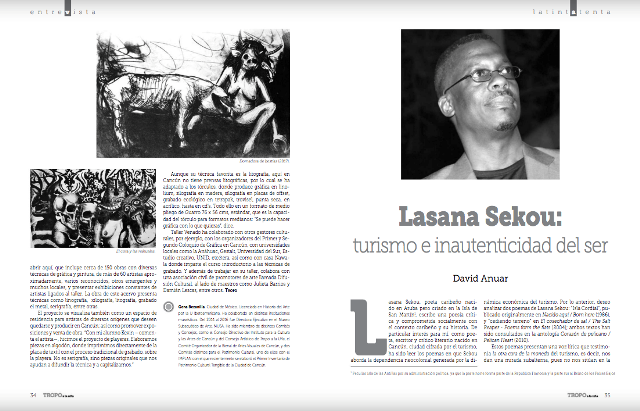
GREAT BAY, St. Martin —Literary critic David Anuar has placed Lasana Sekou’s poetry about tourism under a microscope in the new edition of the Mexican cultural journal, Tropo a la uña, a said Jacqueline Sample of House of Nehesi Publishers (HNP).
“Lasana Sekou: turismo e inautenticidad del ser,” roughly translated as “Lasana Sekou: tourism and inauthenticity of being,” is the title of Anuar’s five-page scholarly treatment of Sekou’s poems about tourism in St. Martin from his books published by HNP, Born Here (1986) and The Salt Reaper (2004, 2005) goo.gl/WRs3my.
“Of particular interest to me, as a poet, writer and literary critic born in Cancún, a city valued for its tourism, has been reading the poems in which Sekou addresses the neocolonial dependence generated by the economic dynamism of tourism,” wrote Anuar.
Anuar’s critical review is in Spanish. The poems he wrote about are also collected in Pelican Heart (2010), the bilingual anthology of Sekou’s work edited by the erudite Cuban literary historian Emilio Jorge Rodriguez, said Sample.
“These poems present a lyrical voice that testifies to the other side of the tourism coin, that is, they do not give a subaltern look, because they do not place us in the tourist’s vision, but rather they position themselves in the place of the locals, and like these they react in their daily life to tourism as a social phenomenon that reproduces neocolonial relations of dominance,” wrote Anuar.
Anuar cites other Caribbean and Latin American authors in his discussion as well. He argues that Sekou is positing that the Caribbean people have the possibility to look for (to realize) their authentic existence rather than a mimic one or one of any imperialistic configuration (goo.gl/WRs3my, p. 36).
Anuar’s take on Sekou’s poetry makes St. Martin known at different levels in different worlds. It allows more people to also see that tourism, literary authenticity, and the fight for cultural originality or identity in St. Martin and in a major world tourism center like Cancún, Mexico, can be evaluated, even compared critically in socio-economic ways, said Sample.
In fact, Anuar concludes his paper with what is arguably a startling comparison between the Caribbean island and his Mexican city: “And this is the great paradox that, a (like) society that lives on tourism, also beats in our blood: what feeds me, denies me.”




























